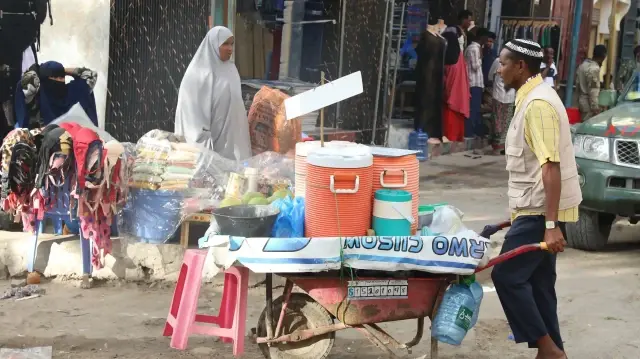Somalia faces severe hunger crisis with 1.85 million children malnourished

Nearly one-quarter of Somalia's population is confronting acute hunger, with 1.85 million children under five at risk of severe malnutrition according to the World Food Program. Climate patterns including La Nina and a negative Indian Ocean Dipole are expected to prolong drought conditions, worsening an already dire humanitarian situation across the Horn of Africa nation.
Approximately one-fourth of Somalia's population is experiencing acute food insecurity, with the World Food Program warning that 1.85 million children under five years old face the threat of severe malnutrition. The alarming figures emerge as climate forecasts predict continued drought conditions across the Horn of Africa country, creating what aid agencies describe as a rapidly deteriorating humanitarian situation.
Climate Patterns Worsen Crisis
The World Food Program attributes the escalating crisis to unfavorable climate conditions, noting that La Nina and a negative Indian Ocean Dipole are expected to prolong erratic rainfall patterns and extend drought periods throughout Somalia. These weather phenomena are anticipated to "intensify drought in the north, hinder recovery efforts in the south, and heighten the risk of crop failure, livestock losses, and water scarcity," according to the UN agency's assessment.
Regional Impact and Funding Shortfalls
The UN Office for the Coordination of Humanitarian Affairs reports that drought conditions have worsened in northern regions and are expanding into central and southern Somalia. The situation is particularly critical in Nugaal, Mudug, Bari, and Sanaag regions, which are enduring their fourth consecutive season of inadequate rainfall. UNOCHA has warned that "millions of people are at risk of worsening hunger and malnutrition due to funding shortfalls," with food assistance recipients dropping from 1.1 million in August to just 350,000 in November.
Historical Context and Current Challenges
Somalia previously endured five consecutive seasons of failed rains between late 2020 and late 2022, the longest such period in recent decades, leading to a severe drought in 2023 that left 5 million people in acute food insecurity. Current conditions echo the devastating 2011 famine that claimed over 26,000 lives according to UN estimates. Compounding the crisis, water prices have increased from $12 to $15 for a 200-liter barrel and are expected to rise further, placing additional strain on displaced populations.
Reklam yükleniyor...
Reklam yükleniyor...







Comments you share on our site are a valuable resource for other users. Please be respectful of different opinions and other users. Avoid using rude, aggressive, derogatory, or discriminatory language.